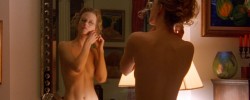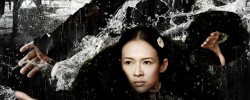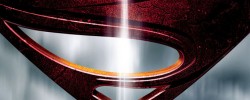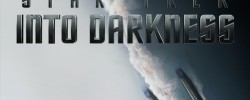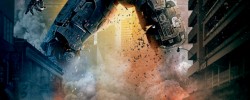TIFF 2013 Interview: Stephen Broomer on Pepper’s Ghost, which World Premieres on September 7th
Editor’s Notes: The following interview is part of our coverage of the 2013 Toronto International Film Festival. For more information on the festival visit http://tiff.net and follow TIFF on Twitter at @TIFF_NET.
Stephen Broomer is a filmmaker and film preservationist. He holds a BFA in Film and Video Production, an MA in Film Studies, and is presently engaged in writing his doctoral dissertation, on the fate of the Canadian experimental film. He has given public presentations of his film restoration work at the Art Gallery of Ontario, the Canadian Film Institute, and the Pleasure Dome (Toronto).
His film, Pepper’s Ghost: “transforms an office formerly used for observation studies into a tunnel of performative, transfixing illusionism, creating surprising images using filters, fabric and a combination of sunlight and fluorescents. Recalling Slidelength (1969-71), Michael Snow’s slideshow of plastic gels and hand gestures, Pepper’s Ghost is a prolonged expression of demystified mystification, whose startling results are bolstered by a bold soundtrack. “ It was selected by The 2013 Toronto Film Festival’s Wavelengths contingent: “daring, visionary and autonomous voices. Films that expand our notions of cinema.”
Stephen took some time out of the whirlwind of the festival to have a chat with Next Projection.
—
Jacqueline: One of the first things that came to mind as I watching Pepper’s Ghost was mantra-like soundtrack which created the same effect as observing a mandala being made. Was the film a study of this and if so, did making it have a similar effect on you? Where’s the soundtrack from?
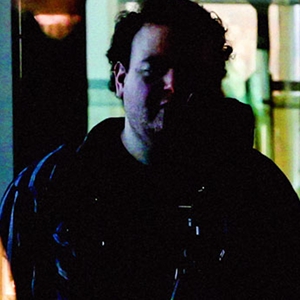 Stephen: The soundtrack is taken, with only minimal editing and manipulation, from one side of an LP of Buddhist monks chanting, released by Nonesuch on their Explorers series imprint in 1972. The album is called The Tantras of Gyütö. I don’t know much about it, except that it was recorded in Bhutan in the late 1960s. What we’re hearing are handheld cymbals and bass throat singing, and it does cause one to think of, as you observed, the making of a mandala. When I first heard this album I thought it was deeply mysterious and beautiful. I kept it in mind for years and was fortunate to find a good home for it on the soundtrack of this film. It emphasizes the parts of the process that are set in ritual.
Stephen: The soundtrack is taken, with only minimal editing and manipulation, from one side of an LP of Buddhist monks chanting, released by Nonesuch on their Explorers series imprint in 1972. The album is called The Tantras of Gyütö. I don’t know much about it, except that it was recorded in Bhutan in the late 1960s. What we’re hearing are handheld cymbals and bass throat singing, and it does cause one to think of, as you observed, the making of a mandala. When I first heard this album I thought it was deeply mysterious and beautiful. I kept it in mind for years and was fortunate to find a good home for it on the soundtrack of this film. It emphasizes the parts of the process that are set in ritual.
I see our actions in Pepper’s Ghost as being similar the gestures of meditation – our movements, though many were introduced by chance, became very ritualized over time. And because they are so focused and so repetitious – the acts of turning on and off lights, opening and closing blinds, folding and pasting coloured gels, and so on – they take on the same focus as that of chanting or of cyclical prayer. I think that my collaborators (Eva Kolcze and Cameron Moneo) and I found, especially in the later and most dense passages of the film, that we were deep in some sort of contemplation. And that contemplation wasn’t something especially sober – it was ecstatic, it was fun – the pleasure of transformation, or perhaps the joy of seeing ourselves inside of an image that was going through these beautiful metamorphoses.
Jacqueline: You also work with quite a few geometric shapes here, recalling some of the shape visuals from your previous work Christ Church – St. James; only there it was deterioration and nature, here it’s more of building upon with synthetics and natural vs unnatural light. What draws you to these 3D and 2D structures as a form for your expression?
Stephen: With Christ Church – Saint James, there was detritus and greenery around the geometric forms that emerged out of that ruin. After photography, my role involved creating superimpositions, building up the density of the composition by laying images atop one another. The grids, squares, rectangles, and triangles at the site were formed out of rebar and brick, but the verdure blended with them and made them seem as if they had sprung up organically. Eventually, the slightest movements of breeze and wildlife that were buried (and often repeating) within those layers allowed the composition to take on the appearance of breathing. In Pepper’s Ghost, the frame of the mirror/window is the central form. Other forms converge on it through our obstructions, or are revealed as a consequence of introducing light. The work is, as you say, a matter of playing with that space through both natural and artificial light – and those tricks of light lead to that same illusion: that the image itself is breathing.
The use of superimposition, of layering an image, be it through performance, as in Pepper’s Ghost, or through photographic manipulation, as in Christ Church – Saint James, has become one of the central gestures in my work. I believe I’m drawn to this aesthetic and to these structures because they allow me to work with our perception of depth and flatness, and to, if not create, then at least reveal, mysteries of vision.
Jacqueline: Colour is imposed on the viewer through the gels and slides put up as people glide in, sometimes in repeated frames. Tell me about this imposition of colour, is meant to bring the viewer in or take them out?
Stephen: For the three of us performing in it, the gels were a way of augmenting the image in the pursuit of beauty. And it’s true, then, that it has the potential of inviting or disconnecting the viewer from the illusion. In putting up those gels, or for that matter in raising and closing the curtains and adjusting the focus, we acknowledge that this is a construction. That may be a distancing device, taking the viewer out of the work. But at the same time, our pursuit of the variations that the illusion offers us, including the chance to treat it with a richer palette, to see the consequence of introducing a vivid blue or orange or green, is an invitation. I hope that the imposition of colour might bring a viewer both in and out of the illusion throughout the piece.
Jacqueline: Towards the end of Pepper’s Ghost, (a technique where I find that I question whether I’m outside, inside, in the past , in the future, in the present or between or all at once – an effect I quite enjoyed), the camera appears skeletal and tiny, almost a like it’s an organic device that you and the others are looking through to look at the viewer. Tell about the process in creating that effect.
Stephen: That effect is achieved through a certain play of light – the light in the opposite room is strong enough to render the camera transparent, but weak enough that the silhouette of the camera remains. While the camera becomes skeletal, our presence behind it is fuller, and our clothes and our skin and our expressions take on a greater presence. In terms of the gaze, I felt that our role, upon discovering this illusion, was to assist the camera in achieving surprising results. And so the eye of the camera is drilling into the viewer and into us as we fill its path. Eva, Cameron, and I are reacting to the image and to each other, but our gestures of leaning down to look at the image also causes us to meet the viewer’s gaze; we become implicit in the stare of the camera. This is very explicit late in the film; there’s one specific instance, late in the film, when Eva leans in from the other side of the glass, peering into the darkened room that the camera is in, and her head seems to align perfectly with that camera itself, and the camera becomes this echo of her eye.
Jacqueline: Your history in avant-garde film and the teaching of it, is vast. What do you see now in experimental film that inspires and drives you to do more? Are there hints of new movements, that you can see, that can be seen in the horizon?
Stephen: Many of my debts are to the past, to history – and I also find that I make films compulsively, that they come to me out of an urgent need and that they are central to my survival. I feel that I could, but hopefully will never have to, continue to make art even if my community were to vanish. But fortunately, that won’t come to pass. This is a very exciting time for experimental film. There are people doing things that are radical and new, and there are so many of us who know our history and who are trying to build from that history and make it new. I hope that such a spirit will give birth to new movements and new forms. I find myself working alongside a very diverse range of young artists in my immediate community, in Toronto, whose work is remarkable and who are totally distinct from one another – I’ll risk naming just a few, Izabella Pruska-Oldenhof, Kelly Egan, Clint Enns, Leslie Supnet, Christine Lucy Latimer, Dan Browne, and my Pepper’s Ghost collaborators Eva Kolcze and Cameron Moneo, whose own films are remarkable. The present scene in experimental film is so broad, so rich, and international in scope that surely new movements are already upon us. But nobody wants to name a movement, because sometimes, to name a movement is to kill it.
In the 60s and 70s, arguably the richest period of output for experimental film and one of the richest periods for public debates on topics of aesthetics and ideology, artists knew the bonds that they shared with their peers very clearly, despite the aesthetic and philosophical chasms that divided them. I hope that we might be entering such a time again, when we can have a true diversity of forms fully coexisting, surviving by innovation or by the pleasures that they give and the critical thought that they provoke, from structuralism, to the lyric film, to the psychodrama, to visual music and other forms of experimental animation, to other forms and to those not yet named.
—
It’s only the second day of TIFF 2013 as I write this and I’ve had my mind taken to so many different places at once. One of the highlights so far has been meeting some innovative, thought provoking directors, including Stephen Broomer.
Related Posts
Jacqueline Valencia
Latest posts by Jacqueline Valencia (see all)
- TIFFF 2013 Interview: Hitoshi Matsumoto on R100 - September 16, 2013
- TIFF 2013 Review: Manakamana (2013) - NP Approved - September 13, 2013
- TIFF 2013 Interview: Bruce Sweeney, Gabrielle Rose, and Tom Scholte on The Dick Knost Show - September 12, 2013


















